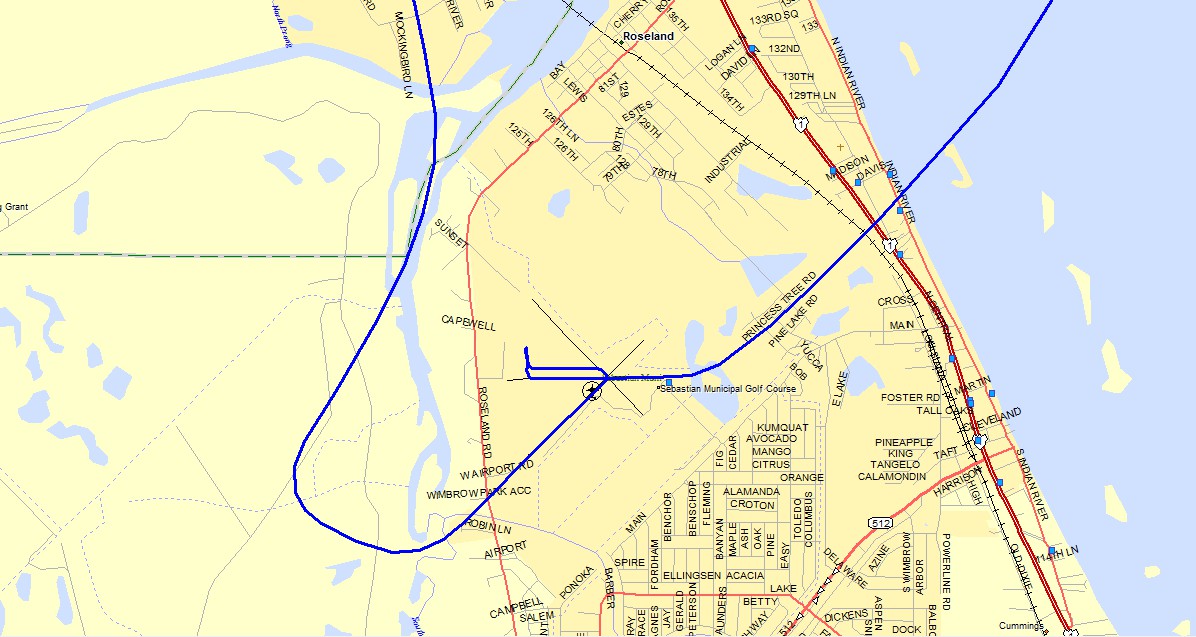First Flight to Sebastian Airport · · PAGE
416.
July 4, 2017: A day with the
temperature in the mid-80's by the time I arrived at the Rockledge Airport
around 10:30 AM. I opened up the hangar when I arrived and got some breeze
flowing in the back door and out the hangar doors. My airplane was still
in the back at the southeast corner of the hangar.
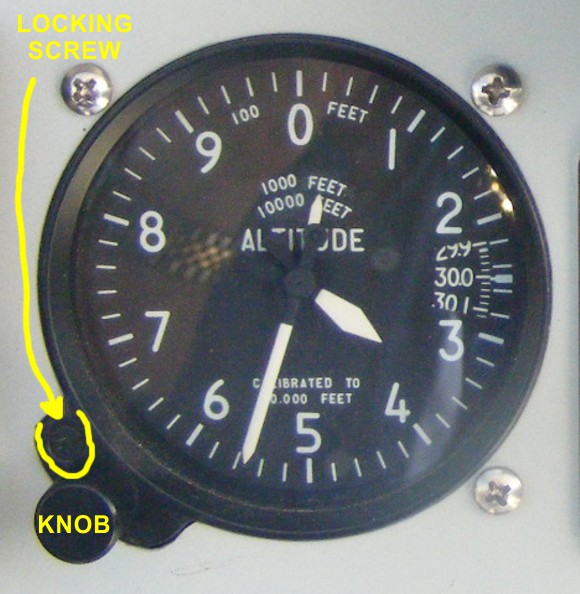 |
Calibrating the
Altimeter
I brought along my flexible flash light to work on
the calibration of my main altimeter. I needed it to light up the
face of the instrument and see the hole in the lock revealed when the
screw is removed. I had found an online article about how it is
done. You can see
the article via this WEB LINK. I also looked up the phone
numbers for the automated weather observation systems (AWOS) at the
closest airports in this area. I called them up to get the ALTIMETER
SETTING when I was doing the work. I went through all the steps from
the article to set the altimeter to the field elevation here at Rockledge
Airport. I then pulled the knob de-coupling from the "clock
arms" of the altimeter. The knob now moves only the numbers in the
Kollsman window that changes the ALTIMETER SETTING input to the
altimeter. I then pushed in the knob for normal operation and
inserted the locking screw again. Before I made this change, the
altimeter would read 30 feet lower than the field elevation when the
correct barometric pressure was entered. (How many of you noticed my watch
band reflected in the glass on the front of the altimeter?)
Paul Kollsman was a German immigrant who invented the
practical altimeter with the correction factor for local barometric
pressure all pilots use in their aircraft. You can learn about him
and how his invention helped the USA and our allies in World War II.
This is a link to
his information on Wikipedia.
After I completed the adjustment to this altimeter, I
went through the setup routines for my Dynon D-10A and made the same menu
adjustments to that important electronic instrument. Both altitude
measurements now match each other. |
Paul Kollsman was a German immigrant who invented the practical altimeter
with the correction factor for local barometric pressure all pilots use in their
aircraft. You can learn about him and how his invention helped the USA and
our allies in World War II. This
is a link to his information on Wikipedia.
After I put away my tools from the altimeter calibrations, I started to
move the airplanes out of the hangar. I had to move the Faeta 322 outside
before I could move my airplane out to the ramp in front of the hangar.
Then I had to move the Faeta back to the corner where my airplane was
located. Those long wings required some "wiggle" moves to get to
the back of the hangar and clear of the obstacles along the wall and the other
Faeta on the other side of the hangar.
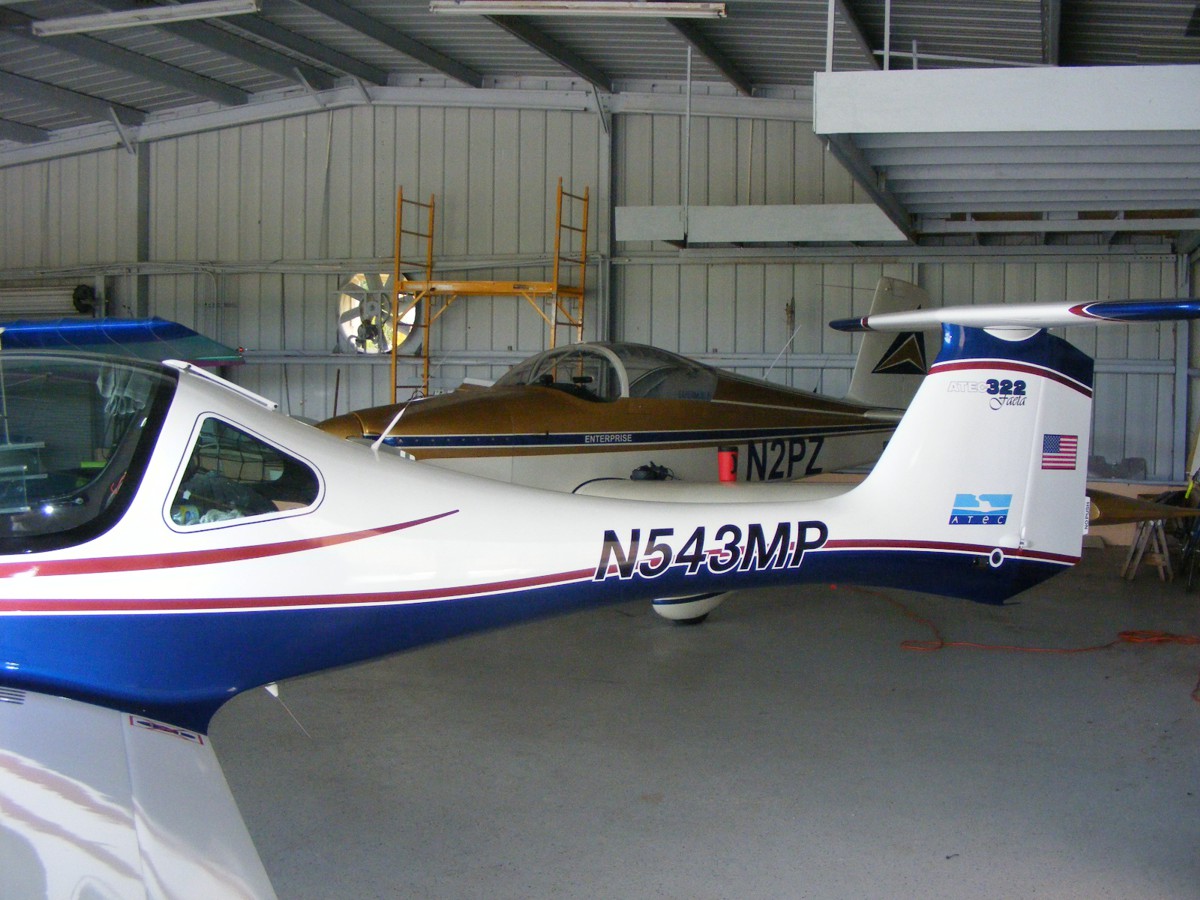
The flight down to Sebastian started with a takeoff on runway 36 and a
turn down the river before coming over the mainland over toward I-95. I
climbed to the altitude I needed to clear the Class D air space for Patrick Air
Force Base and the Melbourne Airport as I headed back down the Indian
River. I engaged my auto pilot to see that it was working. There
were some clouds over the mainland at my altitude of 3,500 MSL as I flew
south. I stayed over the water to remain in VFR conditions.
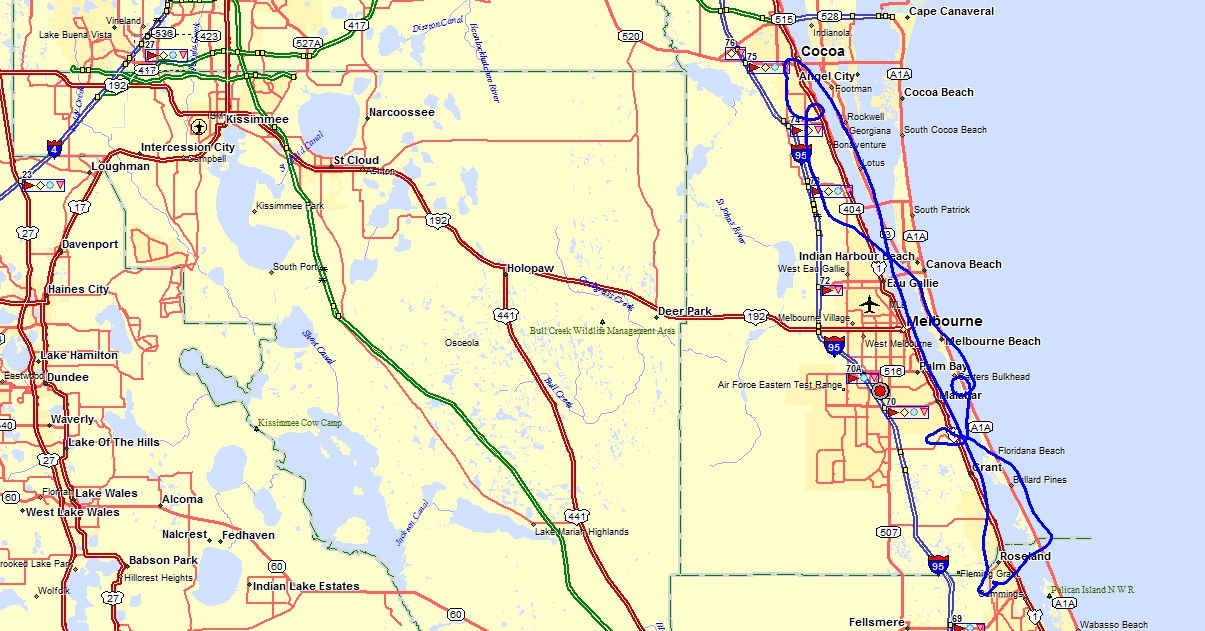
As I approached the Sebastian Airport, I was listening to the Unicom
frequency to know which of the two runways is in use. I taxied to the ramp
and parked my airplane near the FBO and the parachute jumping office as this
place has a lot of skydiving activity from 14,000 feet. I got out of my
seat and sat on the left canopy rail to take some photos. This wide shot
shows the jumpers on the ground and the jump plane after it landed and is coming
back to the ramp near where I am parked.
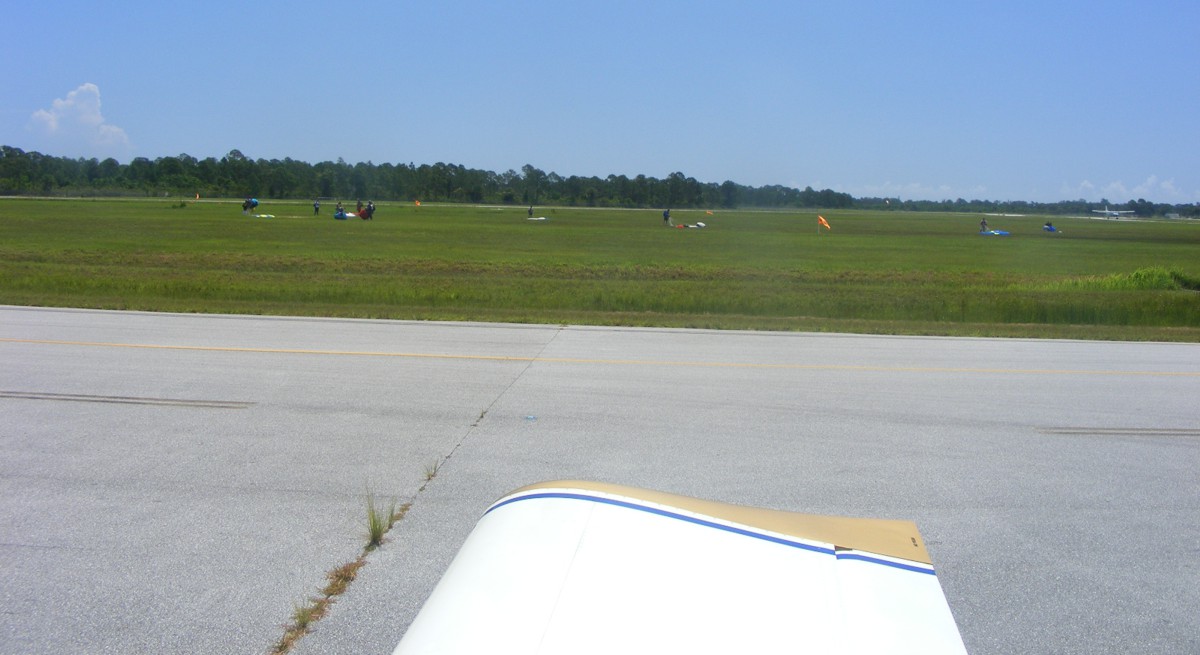
Here is view that shows the windsock for the airport at the left edge of
the image and some other buildings on the other side of the air field.
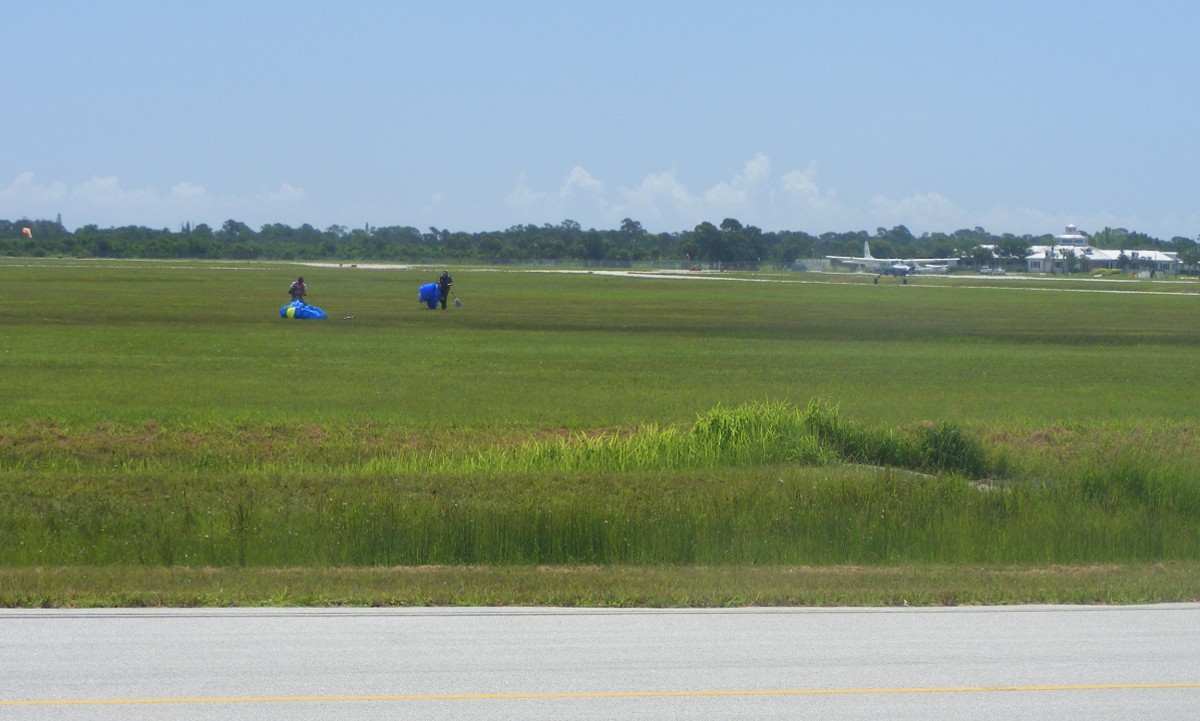
The jumpers are gathering their parachutes and heading to the tent where
they repack them for the next jumps.
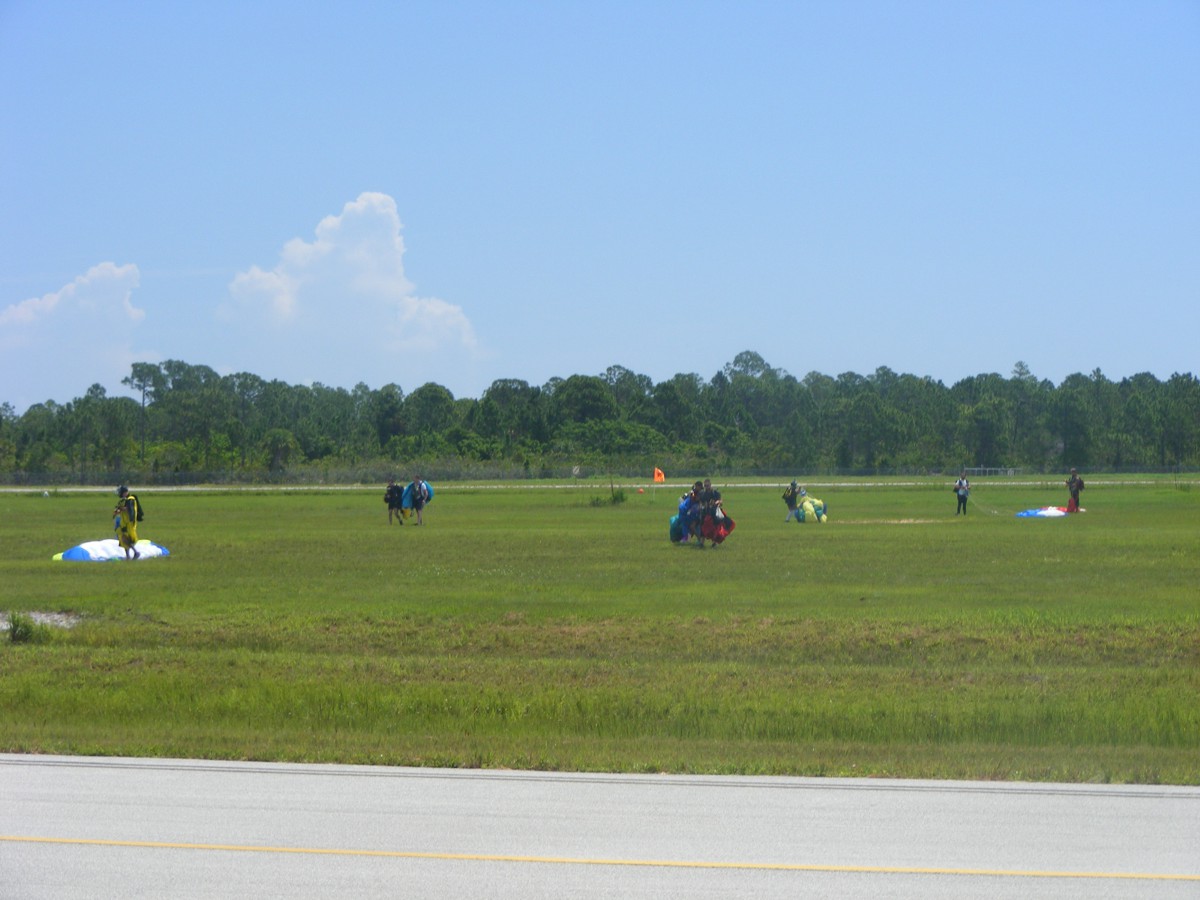
The jump plane is a Cessna 208B with a turbo prop engine up front driving
a three-blade propeller.
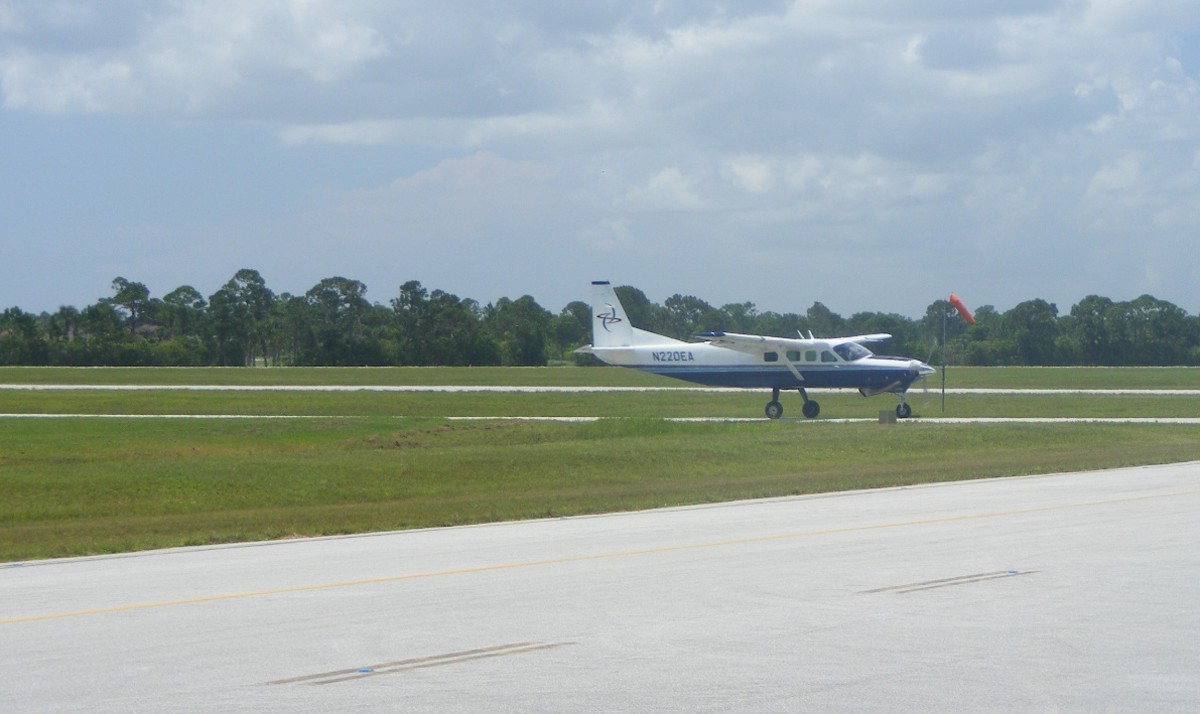
The discussions are full of adrenalin as each jumper shares their jump
with their friends.
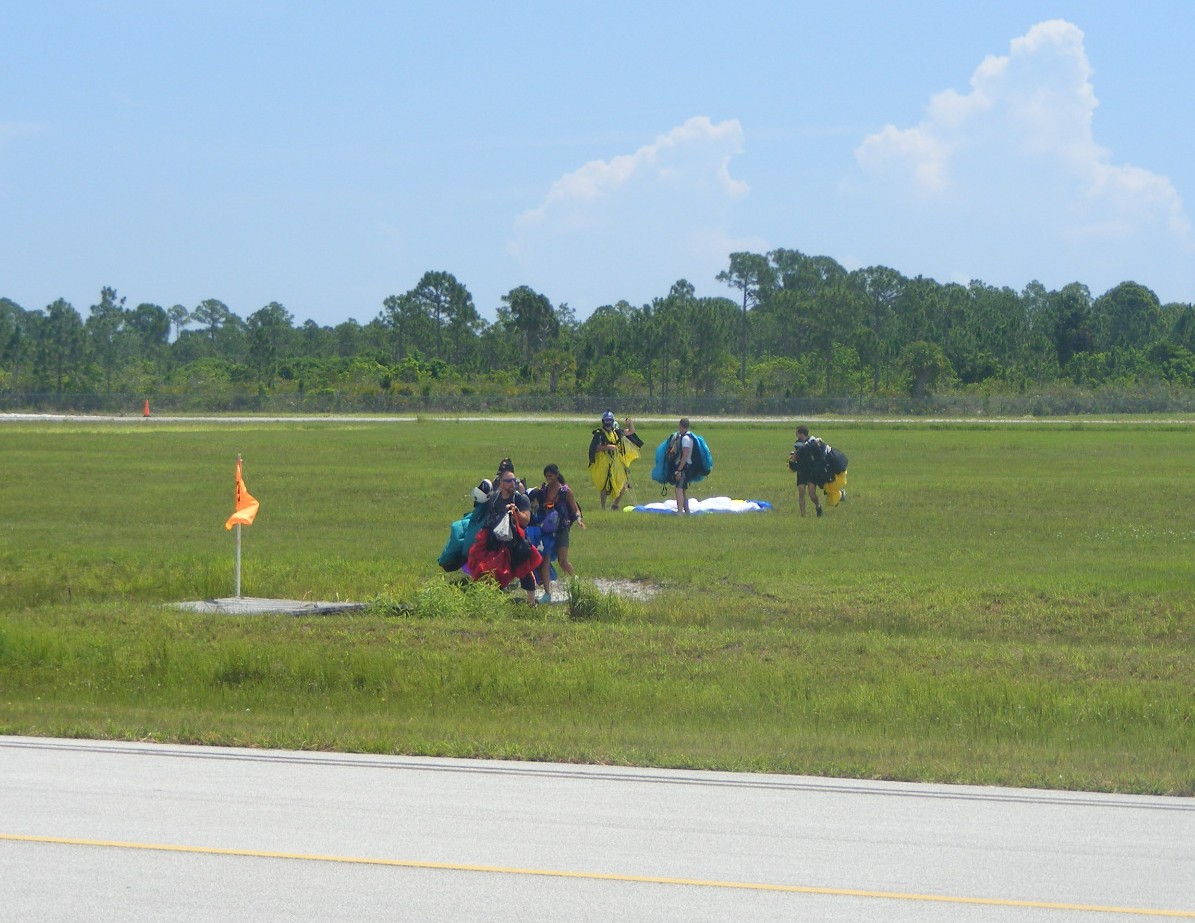
The door is removed to make it easy to exit the airplane when they are up
at 14,000 feet.
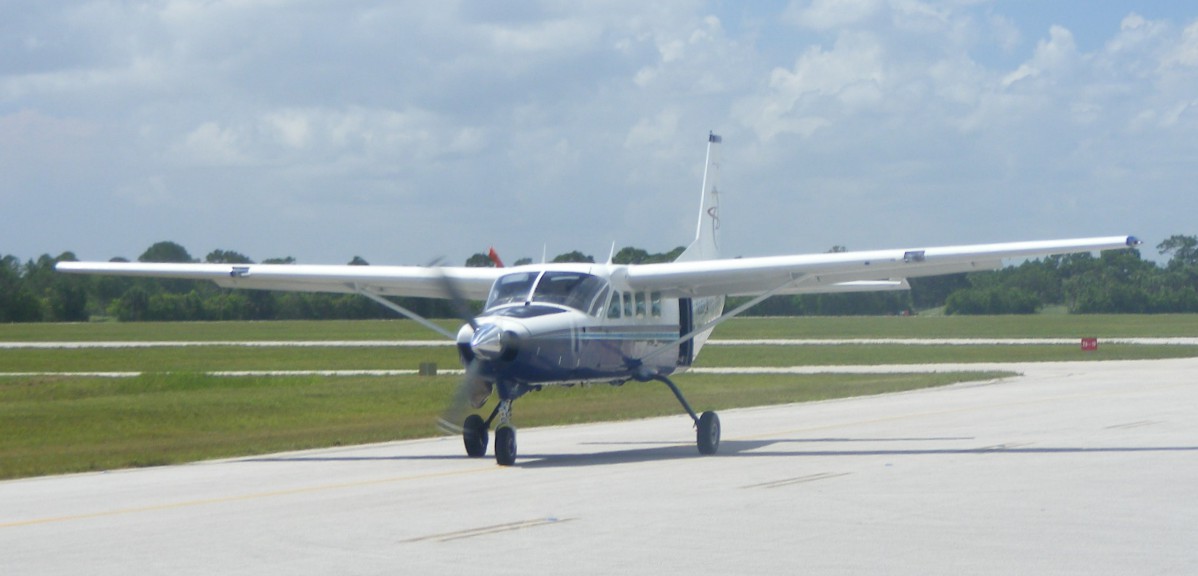
With the temperature down here at 90 degrees, the jumpers quickly remove
their jump suits after they land. It is a lot cooler at 14,000 feet, and
the wind chill factor when falling at 120 MPH can be uncomfortable. The
bulky suits also keep them from falling too fast before the parachute is
deployed. When inflated, the parachute canopy acts as a wing and allows
them to be steered to a specified landing spot.
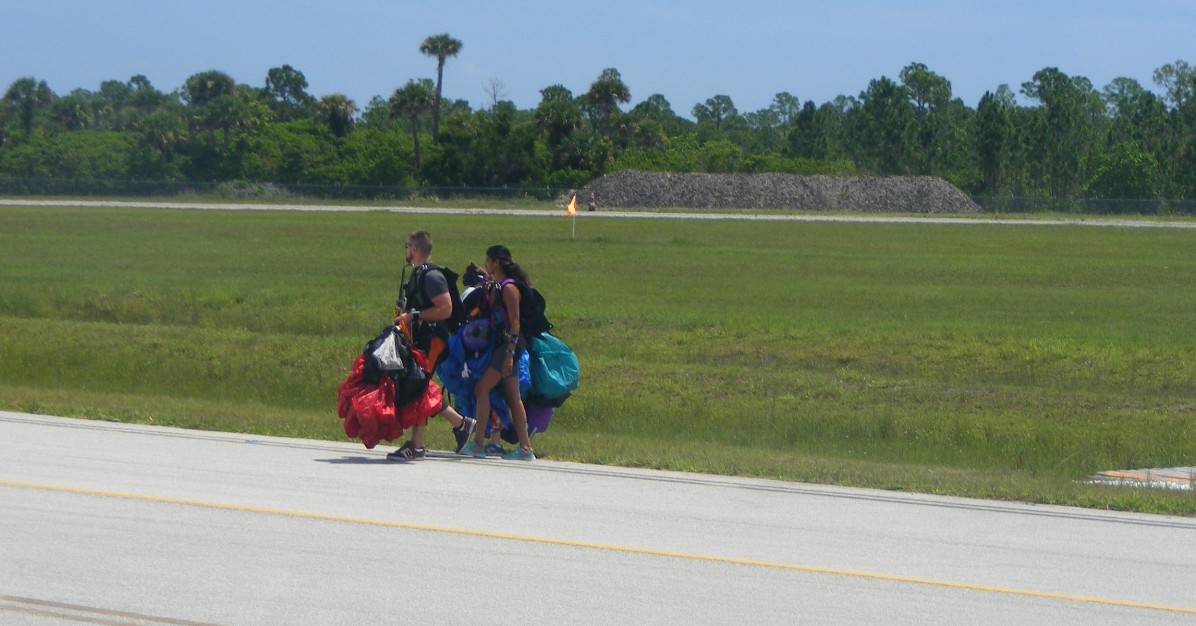
I pushed the zoom lens to catch these guys at the far side of the landing
zone getting ready to walk back.

Since this is my first time at the Sebastian Airport, I have taken the
usual ramp photo near the fuel tanks.
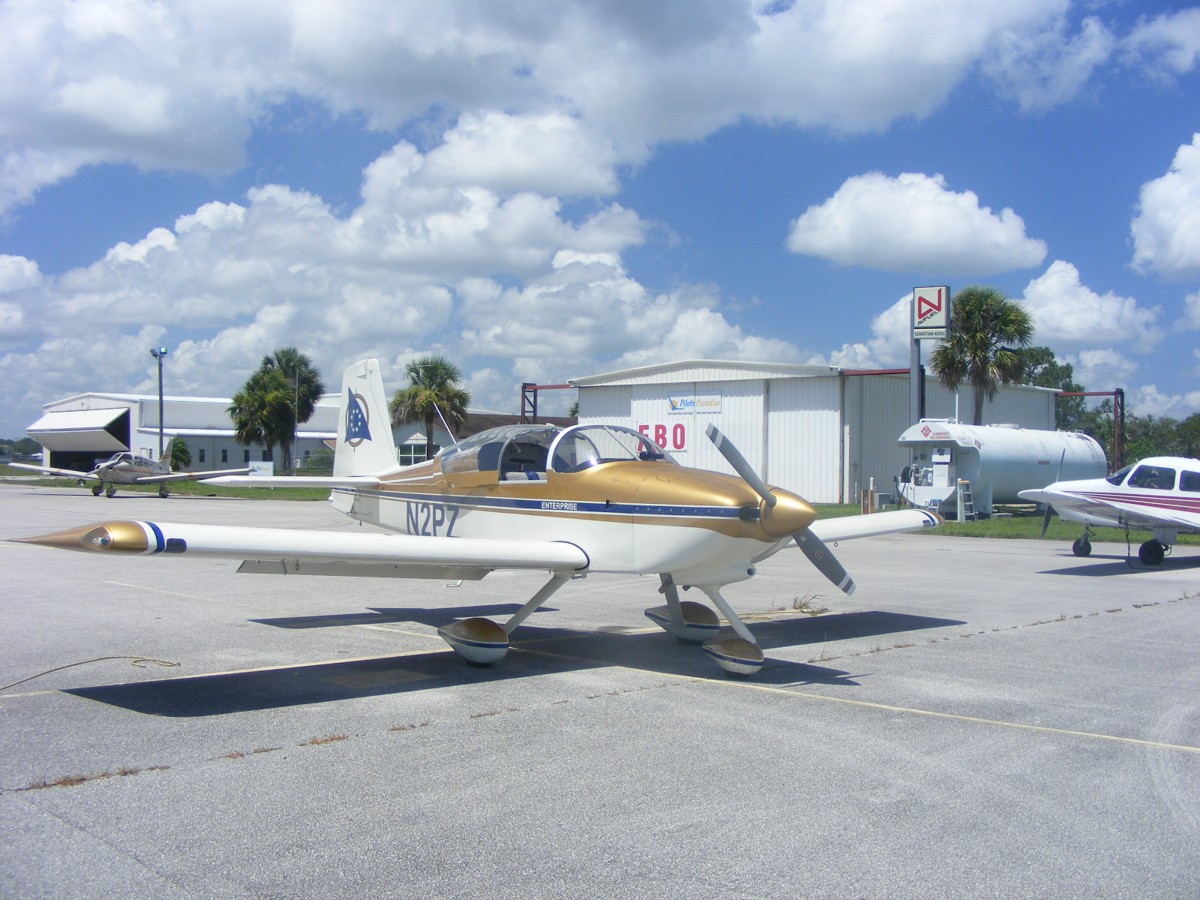
Here is the view looking at the parachute jump school and support
facilities. I was watching the next wave of jumpers landing while I was
preparing to start my engine for departure. I noticed one of them had a
"flying suit" with fabric between the pants legs. When a jumper
wears one of these suits, his suit acts like the tail on most birds as he moves
his legs.
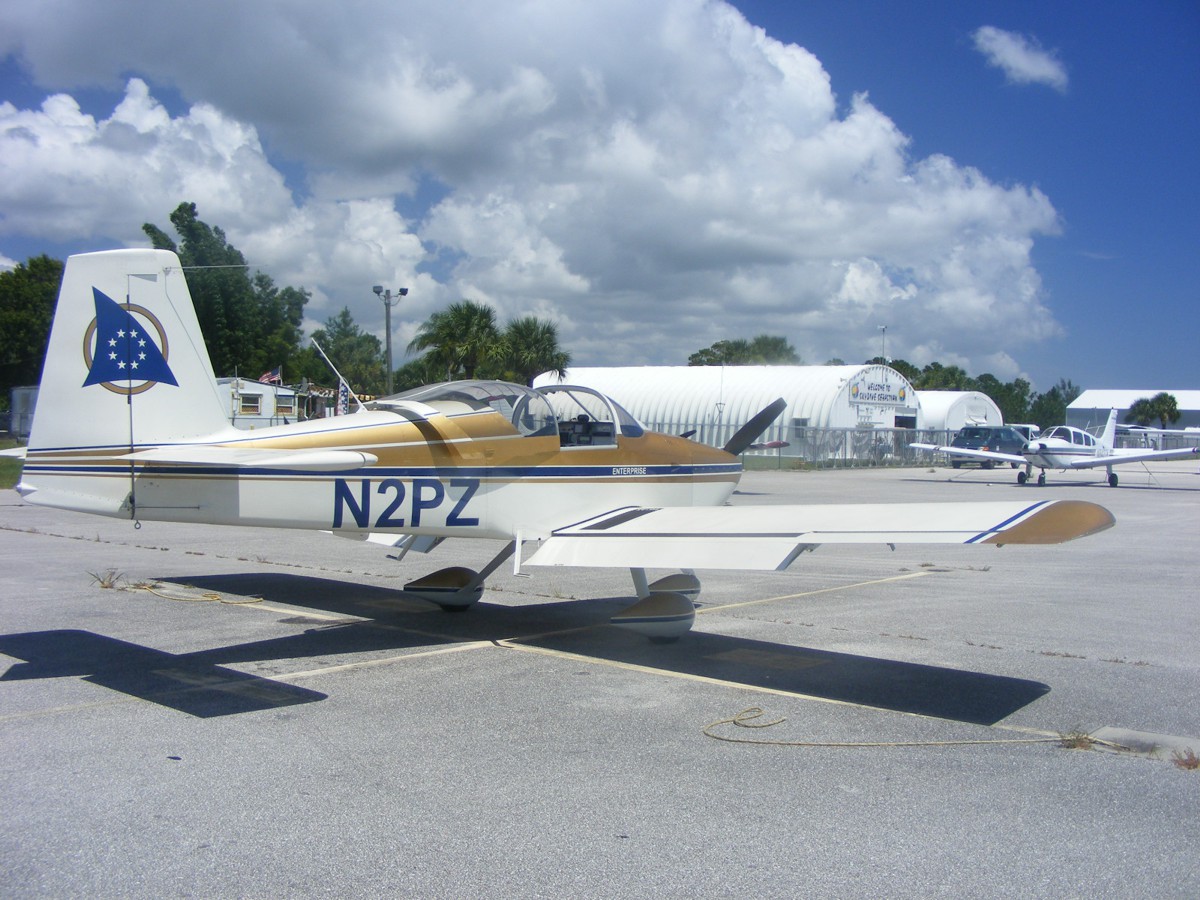
Here is the GPS ground track arriving from the north using runway 5 and
departing to the northeast from runway 10 at the Sebastian Airport. There
was a sign by runway 10 for pilots to immediately turn on a heading of 060
degrees soon after takeoff for noise abatement by avoiding populated areas.
